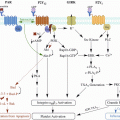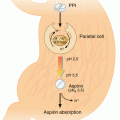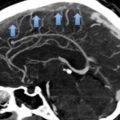Fig. 1
PRISMA diagram
Abstracts were screened and included or eliminated by title, abstracts and full texts were screened for the peripheral use of non-invasive medical devices in humans for the management of lower limb peripheral arterial disease.
Inclusion criteria were clinical or haemodynamic data related to the device use. Exclusion criteria were animal studies, studies pertaining to epidemiology, diagnosis or pure imaging. Non-electrical devices were excluded (e.g. vascular closure devices), as were invasive therapies such as endovascular intervention, spinal cord/epidural stimulation, and extracorporeal limb perfusion. Functional electric stimulation for spinal cord injury was excluded.
3 Results
Thirty-one papers met criteria for inclusion and were grouped according to indication for use. Despite multiple devices, protocols and trial designs, inferences have been drawn. Table 1 details the studies, with numerical results data given where possible. Meta-analysis has not been performed.
Table 1
Results of systematic review grouped according to indication
Device | Paper | Year | Setting/program | Subject profile | N (PAD/control) | Outcome measure | Outcome time period | Finding |
|---|---|---|---|---|---|---|---|---|
Stable claudicants | ||||||||
Circulator boot | Dillon [9] | 1980 | Combination of laboratory studies and case series | Claudicants, severe PAD non-reconstructable | 29/6 | Lab – subcutaneous pO2, pulse volume, ABPI | 40 mins | Oscillometry readings from the leg increased during therapy in normal and diseased limbs after one session, changes more pronounced after series of treatment. TcPO2 increased in diseased limbs during treatment |
Clinical – ulcer healing, presence rest pain, ICD | ||||||||
Reclining, applied to whole leg. 55–80 mmHg applied in late diastole. One 40 min session for lab study, | 22/25 severe legs benefitted clinically from therapy (claudication distance, ulcer healing, rest pain). Best results in 3–4 sessions/day for >1 week. Two stopped therapy due to pain | |||||||
ArtAssist | Eze [10] | 1996 | Alternatively foot +/− calf, sitting position, 120 mmHg 10 s 2/min | Stable claudicants, SFA occlusion | 10/22 | Laser Doppler (great toe) | Mean of 6 IPC cycles | Flux (PAD/healthy) 288/428 % of baseline with combination IPC |
Duplex popliteal artery | Arterial flow (PAD/healthy) 150/273 % of baseline with combination IPC | |||||||
Combination IPC more effective than IPC calf/ft alone | ||||||||
ArtAssist | Delis [11] | 2000 | Recovery position, IPC foot, 1–120 mmHg, 4 s, 3/min, 5 mins on, 10 min rest, 5 mins on etc. | Claudicants (fontaine 2) | 40/25 | Duplex popliteal artery velocities and flow | Lab | Mean popliteal artery flow 211 % p < 0.001 in healthy, 151 % p < 0.001 in PAD |
Mean popliteal artery velocity 215 % p < 0.001 in healthy, 149 % p < 0.001 in PAD | ||||||||
Post compression baselines of both were significantly higher than pre-compression | ||||||||
ArtAssist | Delis [12] | 2000 | Sitting position, IPC foot/calf/combination, 1–120 mmHg, 4 s, 3/min, 5 mins on, 10 min rest, 5 min on etc. | Claudicants (fontaine 2) | 31/25 | Duplex popliteal artery velocity and flow | Lab | IPC combination mean velocity 263 % (p < 0.001) in controls, 170 % (p < 0.001) in PAD |
IPC combination volume flow 278 % in (p < 0.01) controls, 174 % (p < 0.001) in PAD | ||||||||
IPC combination was more effective than IPC foot or IPC calf in PAD | ||||||||
ArtAssist | Delis [13] | 2000 | Device versus no device. Sitting position, 1–120 mmHg, 4 s, 3/min, >4 h/day | Claudicants (fontaine 2) stratified for smoking and diabetes | 25/12 | ICD, ACD, ABPI rest and post-exercise, duplex popliteal artery flow | 4.5 months treatment, follow-up at 12 months | No improvement in parameters for those randomised to no device |
Popliteal artery flow 136 % of week 0 baseline at 4.5 months | ||||||||
IPC foot at 4.5 m – ICD 246 % baseline, AWD 206 % (p < 0.001 for both) | ||||||||
ABPI (pe) significantly greater than control group at 4.5 and 12 m. Significant benefit over controls persisted at 12 m | ||||||||
ArtAssist | Delis [14] | 2002 | Sitting position, IPC calf/ft/combination, 1–120 mmHg, 4 s, 3/min, 5 mins stim, 10 min rest, 5 min stim etc. | Stable claudicants | 22 IC, 36 bypass | Laser Doppler great toe | Minutes, unspecified | IPC increases limb skin blood flux in controls and claudicants |
IPC combination and IPC foot produced the biggest flux differences over IPC calf (p < 0.004) | ||||||||
ArtAssist | Ramaswami [15] | 2005 | Device versus no device | Stable claudicants (matched for smoking, diabetes) | 15/15 | ICD, AWD, ABPI | 12 months | ICD compared to baseline (device/no device) at 4, 6 and 12 months was 237/102 %, 241/103 %, and 250/104 % |
Sitting, IPC foot + calf, 120 mmHg, 3/min, 1 h twice a day | ||||||||
AWD was 184/102 %, 196/105 %, and 201/106 % (difference p < 0.01 for all) | ||||||||
No significant change in ABPI shown in either group | ||||||||
ArtAssist | Delis [16] | 2005 | Device versus no device | Stable claudicants (AWD 35–350 m) | 20/21 | ICD | 17 months | ICD IPC at 5 months 197 % (p < 0.005), BMT no significant difference |
Sitting, IPC foot and calf, 1–120 mmHg, 4 s, 3/min, 3+ h/day | AWD | AWD IPC at 5 months 212 % (p < 0.005), BMT no difference | ||||||
ABPI (rest and post-exercise) | Resting ABPIs not changed either group | |||||||
US popliteal artery volume flow | pe-ABPI IPC higher at 5 months (P < 0.005), BMT no difference | |||||||
QoL (SF-36) | No significant resting artery flow volume changes either group | |||||||
Compliance | Improved quality of life in IPC group at 5 months, BMT unchanged | |||||||
All reported gains with IPC sustained 12 months after treatment | ||||||||
85 % compliance with home IPC (defined as ≥2.5 h/day) | ||||||||
DVT-30 | Morris [17] | 2002 | Supine, unilateral, thigh and calf, 60 mmHg, 10 s, 1/min | Stable claudicants | 11/18 | Duplex common femoral artery frequency | 10 min | PAD subjects arterial frequency 94 %/129 % of baseline during compression/deflation. Controls 85 %/121 % of baseline |
Temperature limb | Hallux temperature changes −0.1 °C for controls and +2.2 °C PAD | |||||||
AV impulse | Morgan [18] | 1991 | Seated, non-weight bearing, 100 mmHg, 3 s, 3/min | Claudicants | 10/12 | Doppler popliteal artery flow | Lab | Flow 193 % and 184 % of baseline in healthy and PAD (p < 0.0001 and p < 0.03) |
Increase reduced by supine position and limb cooling | ||||||||
Flow increase more persistent in PAD | ||||||||
Contralateral limb flow not affected | ||||||||
FM220 (IMC) | de Haro [19] | 2010 | Calf | Stable claudicants | 14/16 | ICD, AWD and ABPI (pre- and post- exercise) | 3 months | ICD 185 %, (p = 0.002), ACD 176 % (p = 0.002), in IMC group, no significant changes in controls |
65 mmHg for 3 s, 3/min | Compliance | ABPI (pe) 197 % (p = 0.003) in IMC group, no significant changes in controls | ||||||
Changes sustained after 3 months | ||||||||
Compliance with device 78 % | ||||||||
IPC (unspecified) | Anthonysamy [20] | 2012 | 10 mins, settings not specified | Stable claudicants (fontaine 2) | 15/0 | Duplex popliteal artery peak systolic flow | Lab | Flow with IPC 175 % of baseline (p < 0.05) |
NMES | Loubser [21] | 1988 | Unilateral, common peroneal nerve | Stable claudicants | 8/8 | BP, HR | 60 min | BP and HR changes not significant for either group |
2 Hz, intensity to produce muscle contraction, 60 mins | Hallux photoplethysmographic waveform | Hallux photoplethysmographic waveform significant change in PAD, not control | ||||||
Skin temp | Skin temperature significant rise in PAD, not controls | |||||||
NMES (Medicompex) | Tsang [22] | 1994 | NMES versus sham (TENS) | Stable claudicants, ABPI < 0.9, AWD < 500 m, peABPI drop > 30 mmHg | 13/13 sham | Treadmill ICD/AWD | 8 weeks | ICD with NMES 126 % of baseline (p < 0.003), control 122 %, at 8 weeks |
Popliteal and anterior tibial nerves, 8 Hz, 350 microsecs | ABPI, | AWD with NMES 134 % (p < 0.004), control 127 % at 8 weeks | ||||||
Ankle flexion fatigue index | Differences between control and IPC not significant after 4 weeks therapy cessation | |||||||
Neither group improved ABPI | ||||||||
Fatigue index improved in both groups, NMES more than sham, but returned to baseline after treatment cessation | ||||||||
NMES (Medicompex) | Hudlicka [23] | 1994 | Unilateral, tibialis anterior and gastrocnemius muscles | Claudicants | 12/12 sham | AWD | 4 weeks | AWD with 4 weeks NMES 161 % baseline (p < 0.05), sham 102 % (ns) |
8 Hz, 330 microsecs, voltage to produce muscle contraction. 20 mins, 3/day, 28 days | ABPI | Fatigue index NMES 200 % baseline (p < 0.05), sham 111 % (ns) | ||||||
Ankle flexion fatigue index | ABPI did not change significantly in either group | |||||||
EMS (MediCompex) | Anderson [24] | 2004 | EMS versus sham (TENS) | Stable claudicants, pe-ABPI < 0.8, AWD 50–350 m | 15 | Leucocyte activation, vascular permeability, | 4 weeks | No evidence of activated neutrophils, increased vascular permeability, or increased cardiovascular event incidence |
Unilateral gastrocnemius | ICD/AWD | ICD EMS/sham 182 %/208 % of baseline (p < 0.01) | ||||||
250 microsecs, 100 V, 6 Hz, 20 mins. 3/day, 7/week | Compliance | AWD 250 %/163 % (p < 0.05) | ||||||
95 % compliance | ||||||||
EMS (Veinoplus) | Abraham [25] | 2013 | Gastrocnemius and soleus | Claudicants (Fontaine 2) | 15 | Duplex SFA, | Baseline, during, 10 mins after | Flow 240 % baseline with stimulation at 100 bpm (p < 0.01) but wide variation |
Rectangular pulse <25 micro C, 50 Vpeak, 1–250 Hz, max duration 240 microsecs, 20 mins increasing contraction rates 60–100 bpm | Most symptomatic leg | NIRS TcO2 | No change in NIRS or O2Hb signal with stimulation | |||||
O2Hb | No induction of ischaemic pain | |||||||
(compared to treadmill test) | ||||||||
Critical limb ischaemia | ||||||||
Circulator Boot | Dillon [26] | 1997 | Reclining. Cardiosynchronous end-diastolic single chamber pneumatic compression boot, 55–80 mmHg | Limb lesions (peripheral arterial, venous, diabetic, and neuropathic disease) | 1517 | Healing rate | Variable | 80.5 % healed or improved |
Relapse rate | Relapse rate of 21.6 % | |||||||
Smoking and distance of home from treatment centre sig affected healing rates | ||||||||
Circulator Boot | Dillon [27] | 1997 | Reclining. Cardiosynchronous end-diastolic single chamber pneumatic compression boot, 55–80 mmHg | CLI for limb salvage | 2/0 | Limb salvage | Variable | Limb salvage described in both PAD cases, also diabetes and osteomyelitis. Intensive treatment regime using injected antibiotics, soaks, dressings and boot Tx. Reversal of peripheral neuropathy loosely described |
Circulator boot (then home programme) | Vella [28] | 2000 | No unified protocol. | CLI, non-reconstructable with ischaemic ulcers | 98/0 | Ulcer healing, ulcer size (static or smaller), amputation rate, mortality | Average 40 days | 79 % “favourable outcome” (ulcer decrease in size, complete healing, revascularised) |
Circulator boot – 55–80 mmHg timed with end-diastole, 45 mins, 1–2/day
Stay updated, free articles. Join our Telegram channel
Full access? Get Clinical Tree
 Get Clinical Tree app for offline access
Get Clinical Tree app for offline access

| ||||||||




